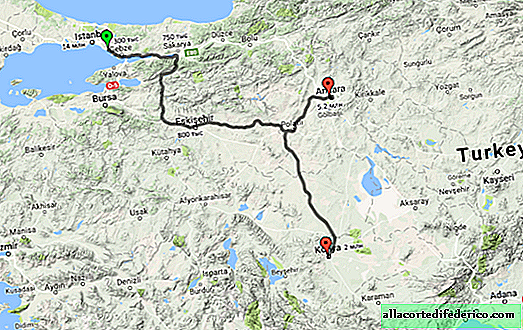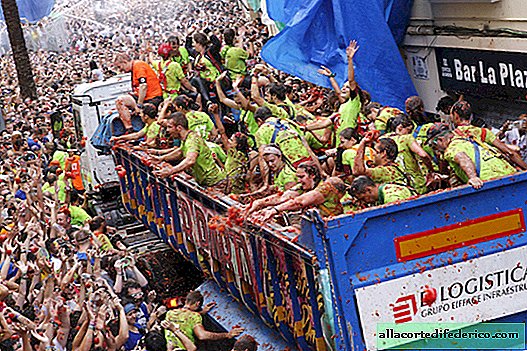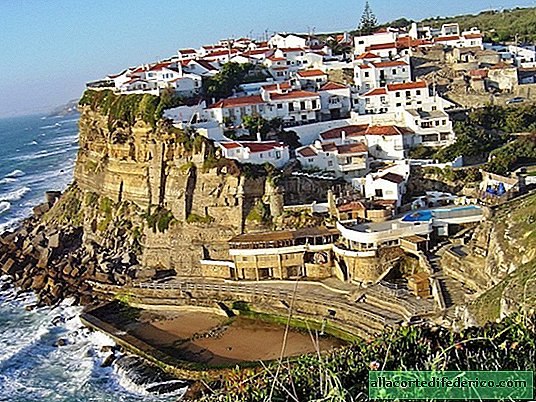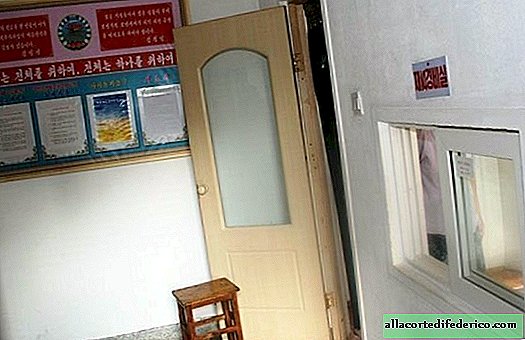Turkey High Speed Rail
Today, high-speed railways in Turkey are two lines. The first is from Ankara to the Istanbul region of Pendik, the second is from Ankara to the city of Konya. The total length of the lines is about 620 km, speeds up to 300 km / h.
The first line is still hybrid, some sections of the train pass through public railways. Only about 60% of this line is a specially built high-speed railway with a speed limit of 250 km / h. The second line is almost entirely high-speed, with a speed limit of 300 km / h.
The current network of high-speed rail traffic in Turkey as of January 2017. (c) Google Maps + proprietary GPS tracks. The scale is specially selected so that Antalya can be seen. Near the main cities indicated population agglomerations.

The main railway station of the Asian side of Istanbul, Khaidarpasha, is now under reconstruction. High-speed trains run from Pendik station, which takes about an hour from the center by metro. It used to be even longer, but the M4 metro line was recently extended, and now it takes about 20 minutes to walk from the Pendik metro station to the high-speed train station of the same name. A major reconstruction of the main station on the Asian side of Khaidarpash is associated not only with the construction of a high-speed railway, but also with the opening of the Marmaray project railway, which runs in the tunnel under the Bosphorus and connects Europe and Asia. The central part of the Marmaray project, which is a tunnel under the Bosphorus and five stations, was opened at the end of 2013.
The main train station on the Asian side of Istanbul is Haydarpaşa Garı.

Pendik High Speed Train Station is located entirely in a small underpass. So far, the only way out to the platform is registration for the flight and security control. The station station is a little off to the side, and it uses only the VIP lounge for passengers. Tickets are also sold in the underpass. Near the exit to high-speed trains there is an exit to the platform where trains of the Marmaray project will stop.
Station Pendik (Pendik). You can accidentally pass by.

The first part of the way, the train runs along the Izmit Bay of the Sea of Marmara and passes a large number of stations of the Marmaray project. At this point, the railway has four routes: two for long-distance trains and two under the suburban Marmaray. In fact, the train runs through an endless city with residential quarters on one side and port territories and factories on the other. Now it’s clear where we got so many Turkish goods from and where they all produce. The concentration of industry is very reminiscent of the Rhine-Ruhr agglomeration in Germany.
The four-way section ends in Gebze - the terminal station for commuter trains. This station and the Marmarai branch are already on the Istanbul high-speed transport schemes. The train goes to Gebze at speeds of 80-100 km / h.
Gebze Station The ultimate for the Marmaray train.

We pass the Osman Gazi bridge.

The fourth longest suspension bridge in the world was opened in April 2016. In Turkey, just a megabum of construction. In addition to this bridge, in 2016 only in Istanbul, an automobile tunnel was opened under the Bosphorus and the third combined road and rail suspension bridge across the same Bosphorus. They build the metro faster than redrawing the circuit.
A double-track section starts from Gebze, and speeds drop to about 80-90 km / h. Then, in the Kartepe district, the train goes to the first dedicated high-speed section, built parallel to the old railway, and accelerates to 160 km / h.
If the railway along the Gulf of Izmitisk is sandwiched between the mountains and the sea, then the plain section begins here. Continuous development ends, but this region is also densely populated. In direct line of sight there are always residential areas of different cities. The large Sapsanja lake begins, and somewhere in its area a dedicated section ends, and we return to the public railway. Speeds fall first to 100 km / h, and then to 50 km / h. After 1 hour 10 minutes, we arrive at Arifiye station on the outskirts of Sakarya.
We pass the Sapsanja station, located on the shores of the lake of the same name.

After Arifeya station, the train turns south and goes deep into the mountains. Speeds fall to 60 km / h. Snow appears right in front of the mountains.
The first mountain section begins.

The first hints of snow appear in the mountains.

After the mountain section, we exit into the valley and go to the high-speed section. At this point, the train rises to a height of about 120 meters above sea level. The line we reached is not yet completed, a long and low viaduct towards Istanbul is clearly visible. It ends with a tunnel, and there is no contact network on it yet. The train turns almost 180 ° and for the first time accelerates to its maximum 250 km / h.
Unfinished high-speed section with a tunnel. Now we will go to it and for the first time we will accelerate to 250 km / h.

The plain section ends, and the train, without slowing down, turns south again, straight into the mountains. Tunnel after tunnel, and more snow.
Bozüyük station, at this point the Bursa railway will be connected to the high-speed line.

At this point, the train rose to a height of about 1000 meters above sea level.

A high-speed railway pierces the mountains like a needle, at a speed of 250 km / h the train flies from the tunnel to the viaduct and vice versa. At the same time, a motorway and a public railway loop through the gorge.

In front of one of the tunnels, right on the stage, the train stops. We miss the oncoming one. It turns out that right in the tunnel, the train goes to the old section, which begins with a single-track tunnel and has several single-track sections.
The next time the train slowed down only because of a stop at the central station of Eskişehir.
In Eskisehir, the train is packed to capacity. After the train station, the central part of the city passes through a tunnel and accelerates to a maximum of 250 km / h in no hurry. Further we go along a snowy plateau strictly east. In parallel with the high-speed railway, there is an old branch, it is single-track and electrified.
The average view from the train window in the area.

A compressor hummed loudly and unpleasantly in the car. The train talked a little at speed, walking on the car was not easy. Each wagon has one vestibule located in the center, it breaks the wagon into two cabins. In the economy class, the seats are modest, but comfortable enough, there are no sockets. On the Istanbul-Ankara line, TCDD HT65000 trains manufactured by the Spanish company CAF operate. By order of the Turkish State Railways (TCDD), 12 six-car trains were built, all of which are operated on this line. Maximum speed - 250 km / h, capacity - 419 people.
After arrival. TCDD HT65002 train at Ankara train station.

Train TCDD HT65002, economy-class carriage interior.

The train slightly slows down in the area where three directions join - Istanbul, Ankara and Konya. A fairly flat plateau is replaced by very hilly areas with large ravines.
In places, the relief is more complicated. Viaducts, tunnels, and deep grooves reappear.

Somewhere in the Polatli area.

A few minutes later, the train arrives at Sincan. There, the high-speed section ends and a large complex for servicing high-speed trains is located.
TCDD HT80101 train on the way to Ankara train station. To the left of the temporary tracks, a place has been prepared for the high-speed section. Due to the small radius curve, there will be serious speed limits, but this is not so important, since the station is less than 2 km away.

Total: Istanbul (Pendik) - Ankara, 506 km in 4 hours 5 minutes, average speed 124 km / h.
The station was built recently, some rooms are still at the decoration stage. Huge space is not heated, it is cold inside the station. It so happened that the new station was built on the back of the old. The station was built according to the traditional Chinese scheme - the upper hall with registration and waiting, the lower one with trains. Checking of tickets is carried out, as in China and Spain, in advance, in the upper hall. Only then can you exit the platform. At the entrance to the station building, as with us, security control. If security control is at the entrance to the station building, then when boarding a train it is not. On the upper floors of the station are shops, a large food court, office visits, a hotel and a business center.
High-speed train station (Gar) (YHT) Ankara.

Large atrium at the entrance.

The fourth floor of Ankara station is almost entirely given over to a food court.

On the fourth floor there is a balcony overlooking the old station. It is now closed, the platforms near it are not in operation.

The next part of the journey, from Ankra to Konya, I take the TCDD HT80103 train. The Turkish state railways received the first batch of seven trains quite recently, I came across trains with numbers from 1 to 5. The maximum speed of the TCDD HT80100 trains is 300 km / h, the capacity is 519 passengers.
Trains TCDD HT80103 (Siemens Velaro TR) and TCDD HT65002 at Ankara station.

The routing plate is located on the door. We have one stop - in Polatli.

Salon of the train TCDD HT80103. I must say that the Russian version of Siemens Velaro has the most comfortable interior of the whole family, it only needs outlets. In the Turkish version of the chair is simpler, but with sockets.

Train TCDD HT80103. Wagon bar.

We go to Konya at a speed of about 200 km / h. We arrive 10 minutes late, most likely this is due to ice and a record amount of snow. On the way back, the same train went all the way at a speed of 250 km / h and arrived exactly on schedule.
Landscapes all the way dull, a little mild, fields to the horizon and all this is abundantly sprinkled with snow.

Total: Ankara - Konya, 315 km in 1 hour 50 minutes, average speed - 171 km / h.
For a photograph of the train to Konya, a well from the security guard. It seems that surveillance cameras still work. Saved only "my not to understand yours." The Turks generally have problems with English, they practically do not speak outside the tourist reservations.
TCDD HT80103 train at Konya train station.

In general, despite serious investments and large-scale construction of dedicated high-speed railways, the demand for travel remains relatively low. With a ticket price of 109 Turkish lira (1800 rubles) from Istanbul to Ankara and vice versa, only 6 pairs of six-car trains are on the schedule. And the reason is simple - a trip by car between Ankara and Istanbul takes about the same 4.5 hours. Good highways are the main competitor to high-speed rail in Turkey. Things are better with the Ankara - Konya route, but there are only 7 pairs of eight-wagon trains per day. A return ticket costs 747 TL (768 rubles).
Renders of future stations from a poster at Konya station. Ankara station is already completed.

Active development of high-speed traffic continues; by 2023, the Turks plan to build 10 thousand km of railways. The construction of the Ankara-Sivas (602 km), Bursa-Bozüyük lines (75 km, began construction in 2011, plans to open in 2023, a difficult mountain section), Konya-Karaman (opening this year) and Pendik-Halkali with transfer high-speed railway station in the European part of Istanbul. A few more lines are now under construction.


















